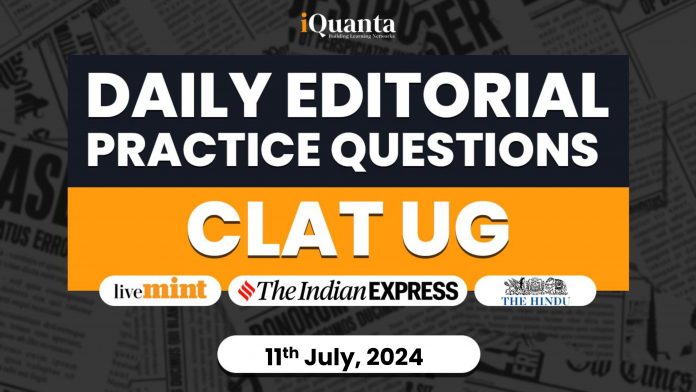Passage 1
The Indian Space Research Organization (ISRO) is keen on participating in a planetary defence mission in space ahead of a close shave for Earth with the Apophis asteroid on April 13, 2029, ISRO chairman S Somanath and senior scientists said at an international workshop held in Bengaluru on Wednesday to mark Asteroid Day 2024.
The aim of the asteroid workshop, with school students in attendance, is to raise awareness on the impact threats of asteroids, the importance of asteroid research for a better understanding of the universe, and to inspire innovative solutions for planetary defence, the ISRO said.
“When Apophis comes in the year 2029, we should be able to go and meet this asteroid when it is very close to Earth. It is a one-time opportunity for humanity to work with an asteroid. India should be part of such efforts. It is yet to be decided in what way we should participate,” the ISRO chairman Somanath said at the Asteroid Day event.
The ISRO chairman referred to NASA’s DART mission, which facilitated the change of trajectory of an asteroid in deep space. “When there is information that an asteroid will strike Earth in a couple of years, then a large amount of euphoria will rise and there will be a demand to act. It would be better if we act when there is no threat. This is why there are many missions to go near asteroids and understand them. One of the missions is the DART mission,” Somanath said. “It is a mission to show that it is possible to impart a little bit of a change of trajectory to an asteroid and cause it to depart from its course. If we can change the trajectory of an asteroid, it will miss Earth by a whisker. That will be good enough to save the Earth,” he said.
Source – https://indianexpress.com/article/cities/bangalore/isro-
Get CLAT Online Coaching!

Passage 2
The government is developing a national indicator to measure “extreme poverty”, as it aims to eradicate the same for the entire population of the country, the statistics ministry has said. The government reckons anyone with income below $1.25/a day as living in “extreme poverty”. The goal set by the ministry assumes importance, as India has been without an official poverty line for a while, and the policy has shifted to from income-based poverty estimates to one based on multi-dimensional deprivations.
Two working papers for the World Bank and the IMF had earlier put out divergent estimates of the state of ‘extreme poverty’ in India, on the shared definition of people living on $1.9 or less in purchasing power parity terms. Interestingly, the World Bank definition of extreme poverty roughly corresponds to the poverty line computed by Tendulkar committee for 2004-05 (Rs 33 per day), if adjusted for inflation. A credible gauge of poverty for the country is all the more important now, given how the pandemic has caused “unprecedented reversals in poverty reduction.” In the report, while quoting NITI Aayog, the ministry mentioned that in the past decade, India has seen a drastic reduction in poverty. It says that the proportion of men, women and children of all ages living in poverty in “all its dimensions” reduced to 14.96% in 2019-21 from 24.85% in 2015-16.This, it said, has been possible due to sustained economic growth during the period (6.7% average growth between FY16-FY20), and implementation of several welfare schemes focused on nutrition, health, education, housing, drinking water, sanitation, skill development, and social protection, the report said
Source- https://www.financialexpress.com/policy/economy-govt-d


